The Versatile and Flavorful World of Pasta Sauce made from Tomato Paste Introduction: Pasta is one of the most beloved and versatile dishes around the world. Its flavorful foundation lies in the combination of pasta and sauce. While there are countless variations of pasta sauce, one popular and convenient option is pasta sauce made from tomato paste. In this article, we will explore the benefits and versatility of this sauce, along with various recipes and tips for making it delicious and nutritious. 1. The Benefits of Pasta Sauce made from Tomato Paste: Tomato paste, derived from ripe tomatoes, offers numerous advantages when used as a base for pasta sauce. These benefits include: 1.1 Concentrated Tomato Flavor: Tomato paste is made by cooking tomatoes for an extended period, enhancing the taste and overall richness. This concentrated flavor adds a distinct tanginess and depth to the pasta sauce. 1.2 Nutritional Value: Tomato paste is a good source of essential nutrients such as vitamins A, C, and E, as well as antioxidants like lycopene. These nutrients contribute to a range of health benefits, including the promotion of heart health and the prevention of certain types of cancer. 1.3 Longer Shelf-Life: Tomato paste has a longer shelf-life compared to fresh tomatoes. This makes it an ideal pantry staple for those who want to whip up a quick and easy pasta sauce without worrying about the tomatoes spoiling. 2. Basic Components of Tomato Paste Pasta Sauce: Building a delicious pasta sauce from tomato paste requires a few key components: 2.1 Tomato Paste: The star ingredient, tomato paste forms the base of the sauce and provides its distinctive tomato flavor. 2.2 Garlic and Onions: These aromatic ingredients add depth and flavor to the sauce. The onions can be sautéed until translucent, and the garlic should be minced or crushed. 2.3 Herbs and Spices: The choice of herbs and spices will depend on personal preferences. Common options include basil, oregano, thyme, and red pepper flakes, which add a touch of heat. 2.4 Liquid: To balance the thickness of tomato paste, you will need to add liquid. This can include water, vegetable broth, red or white wine, or even pasta cooking water. 2.5 Seasoning: Salt, pepper, and a pinch of sugar can be added to enhance the flavors and balance the acidity of the tomato paste. 3. Versatile Tomato Paste Pasta Sauce Recipes: Let’s explore various tomato paste pasta sauce recipes that showcase the versatility of this sauce: 3.1 Classic Marinara Sauce: In a heated pan with olive oil, sauté garlic and onions until fragrant. Add tomato paste, water, herbs (such as basil and oregano), salt, and pepper. Simmer for 15-20 minutes until the flavors meld together. Serve over pasta of your choice.
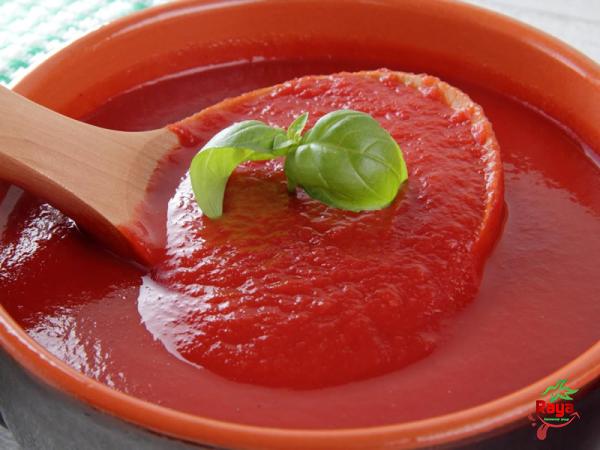
tomato paste
 3.2 Spicy Arrabbiata Sauce: Sauté garlic, onions, and red pepper flakes in olive oil. Add tomato paste, water, a splash of red wine, salt, and pepper. Simmer for 20-30 minutes to allow the flavors to intensify. This sauce pairs perfectly with penne or rigatoni. 3.3 Creamy Tomato Vodka Sauce: Sauté garlic and onions as a base. Add tomato paste, heavy cream, vodka, herbs, salt, and pepper. Simmer until the sauce thickens and the flavors meld. This rich and indulgent sauce complements stuffed pasta like tortellini or ravioli. 3.4 Tomato Basil Pesto Sauce: Combine tomato paste, fresh basil leaves, garlic, pine nuts, Parmesan cheese, olive oil, salt, and pepper in a food processor. Blend until smooth. Use this vibrant and flavorful sauce with pasta dishes or as a spread for bruschetta. 4. Tips for Perfecting Tomato Paste Pasta Sauce: To enhance your pasta sauce made from tomato paste, consider the following tips: 4.1 Simmer for Optimal Flavor: Allow the sauce to simmer slowly over low heat to intensify the flavors and create a rich, well-balanced sauce. 4.2 Balance the Acidity: The natural acidity of tomato paste can be balanced by adding a pinch of sugar or incorporating ingredients like butter or cream. 4.3 Experiment with Additional Ingredients: Tomato paste pasta sauce serves as an excellent base to explore additional flavors. Consider adding grilled vegetables, cooked meats, or different types of cheeses for a delightful twist. 4.4 Store and Freeze: Leftover sauce can be stored in airtight containers and refrigerated for up to a week. Alternatively, freeze the sauce in ice cube trays or freezer-safe bags for future use. Conclusion: Pasta sauce made from tomato paste is a convenient, versatile, and flavorful option to elevate your pasta dishes. Tomato paste’s rich and concentrated flavor, coupled with its nutritional benefits, make it an ideal choice for a variety of sauces. With the basic components and versatile recipes provided, you can easily customize your tomato paste pasta sauce to suit your preferences. So, next time you crave a delicious plate of pasta, reach for that jar of tomato paste and embark on a culinary journey filled with flavor and creativity.Title: Exploring the Business Potential of Pasta Sauce made from Tomato Paste
3.2 Spicy Arrabbiata Sauce: Sauté garlic, onions, and red pepper flakes in olive oil. Add tomato paste, water, a splash of red wine, salt, and pepper. Simmer for 20-30 minutes to allow the flavors to intensify. This sauce pairs perfectly with penne or rigatoni. 3.3 Creamy Tomato Vodka Sauce: Sauté garlic and onions as a base. Add tomato paste, heavy cream, vodka, herbs, salt, and pepper. Simmer until the sauce thickens and the flavors meld. This rich and indulgent sauce complements stuffed pasta like tortellini or ravioli. 3.4 Tomato Basil Pesto Sauce: Combine tomato paste, fresh basil leaves, garlic, pine nuts, Parmesan cheese, olive oil, salt, and pepper in a food processor. Blend until smooth. Use this vibrant and flavorful sauce with pasta dishes or as a spread for bruschetta. 4. Tips for Perfecting Tomato Paste Pasta Sauce: To enhance your pasta sauce made from tomato paste, consider the following tips: 4.1 Simmer for Optimal Flavor: Allow the sauce to simmer slowly over low heat to intensify the flavors and create a rich, well-balanced sauce. 4.2 Balance the Acidity: The natural acidity of tomato paste can be balanced by adding a pinch of sugar or incorporating ingredients like butter or cream. 4.3 Experiment with Additional Ingredients: Tomato paste pasta sauce serves as an excellent base to explore additional flavors. Consider adding grilled vegetables, cooked meats, or different types of cheeses for a delightful twist. 4.4 Store and Freeze: Leftover sauce can be stored in airtight containers and refrigerated for up to a week. Alternatively, freeze the sauce in ice cube trays or freezer-safe bags for future use. Conclusion: Pasta sauce made from tomato paste is a convenient, versatile, and flavorful option to elevate your pasta dishes. Tomato paste’s rich and concentrated flavor, coupled with its nutritional benefits, make it an ideal choice for a variety of sauces. With the basic components and versatile recipes provided, you can easily customize your tomato paste pasta sauce to suit your preferences. So, next time you crave a delicious plate of pasta, reach for that jar of tomato paste and embark on a culinary journey filled with flavor and creativity.Title: Exploring the Business Potential of Pasta Sauce made from Tomato Paste
Specifications of tomato paste
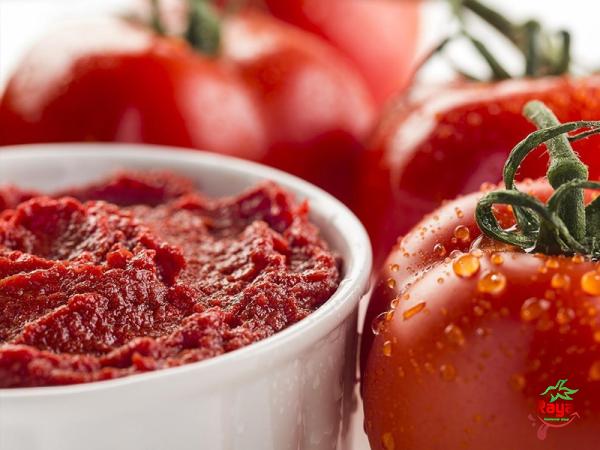 Introduction: Pasta sauce made from tomato paste not only provides a delicious and convenient option for home cooks but also holds significant business potential in the food industry. In this section, we will delve into the various business opportunities and strategies that can be pursued with tomato paste pasta sauce, highlighting its market demand, potential customer base, and possibilities for expansion. 1. Market Demand and Growth Potential: The global demand for pasta sauce is on the rise, driven by factors such as changing consumer preferences, increasing urbanization, and the growing popularity of Italian cuisine. Pasta sauce made from tomato paste caters to this demand with its rich and vibrant flavors. 2. Understanding the Target Market: To capitalize on the business potential of pasta sauce made from tomato paste, it is important to identify and understand the target market. This includes: 2.1 Home Cooks: Many consumers prefer homemade pasta sauce for its freshness and customizable flavors. Targeting home cooks with high-quality tomato paste pasta sauce can be lucrative, as it offers convenience without compromising on taste. 2.2 Restaurants and Food Service Providers: Restaurants and other food service establishments are always on the lookout for reliable suppliers of pasta sauce. Offering bulk products or even creating customized sauce options for these businesses can be a profitable avenue to explore. 3. Differentiated Product Offerings: In a highly competitive market, it is essential to offer unique and differentiated products to stand out. Here are a few potential product offerings to consider: 3.1 Organic and Sustainable Options: As the demand for healthier and environmentally conscious products grows, offering organic and sustainable tomato paste pasta sauce can attract a niche market of health-conscious consumers. 3.2 Gourmet and Artisanal Varieties: By incorporating high-quality ingredients and unique flavor profiles, such as truffle-infused or spicy garlic-infused tomato paste pasta sauce, you can target food enthusiasts and customers looking for premium products. 3.3 Dietary-Restriction Friendly: Cater to a wider customer base by developing gluten-free, vegan, or low-sodium options. This allows you to tap into the growing demand for specialized dietary requirements. 4. Building Brand and Product Awareness: Successful marketing and branding efforts can significantly impact the growth of a pasta sauce business. Consider the following strategies: 4.1 Engaging Packaging: Eye-catching and informative packaging is crucial in attracting consumers’ attention. Highlight the quality, flavors, and unique selling points of your tomato paste pasta sauce to differentiate your brand from competitors. 4.2 Online Presence: Establish an online presence through a website and social media platforms to showcase your product, share recipe ideas, and engage with customers directly. 4.3 Influencer Collaborations: Collaborating with food influencers and bloggers can help generate buzz around your pasta sauce and reach a wider audience. Consider organizing recipe contests or offering promotional discounts to encourage user-generated content.
Introduction: Pasta sauce made from tomato paste not only provides a delicious and convenient option for home cooks but also holds significant business potential in the food industry. In this section, we will delve into the various business opportunities and strategies that can be pursued with tomato paste pasta sauce, highlighting its market demand, potential customer base, and possibilities for expansion. 1. Market Demand and Growth Potential: The global demand for pasta sauce is on the rise, driven by factors such as changing consumer preferences, increasing urbanization, and the growing popularity of Italian cuisine. Pasta sauce made from tomato paste caters to this demand with its rich and vibrant flavors. 2. Understanding the Target Market: To capitalize on the business potential of pasta sauce made from tomato paste, it is important to identify and understand the target market. This includes: 2.1 Home Cooks: Many consumers prefer homemade pasta sauce for its freshness and customizable flavors. Targeting home cooks with high-quality tomato paste pasta sauce can be lucrative, as it offers convenience without compromising on taste. 2.2 Restaurants and Food Service Providers: Restaurants and other food service establishments are always on the lookout for reliable suppliers of pasta sauce. Offering bulk products or even creating customized sauce options for these businesses can be a profitable avenue to explore. 3. Differentiated Product Offerings: In a highly competitive market, it is essential to offer unique and differentiated products to stand out. Here are a few potential product offerings to consider: 3.1 Organic and Sustainable Options: As the demand for healthier and environmentally conscious products grows, offering organic and sustainable tomato paste pasta sauce can attract a niche market of health-conscious consumers. 3.2 Gourmet and Artisanal Varieties: By incorporating high-quality ingredients and unique flavor profiles, such as truffle-infused or spicy garlic-infused tomato paste pasta sauce, you can target food enthusiasts and customers looking for premium products. 3.3 Dietary-Restriction Friendly: Cater to a wider customer base by developing gluten-free, vegan, or low-sodium options. This allows you to tap into the growing demand for specialized dietary requirements. 4. Building Brand and Product Awareness: Successful marketing and branding efforts can significantly impact the growth of a pasta sauce business. Consider the following strategies: 4.1 Engaging Packaging: Eye-catching and informative packaging is crucial in attracting consumers’ attention. Highlight the quality, flavors, and unique selling points of your tomato paste pasta sauce to differentiate your brand from competitors. 4.2 Online Presence: Establish an online presence through a website and social media platforms to showcase your product, share recipe ideas, and engage with customers directly. 4.3 Influencer Collaborations: Collaborating with food influencers and bloggers can help generate buzz around your pasta sauce and reach a wider audience. Consider organizing recipe contests or offering promotional discounts to encourage user-generated content.
buy tomato paste
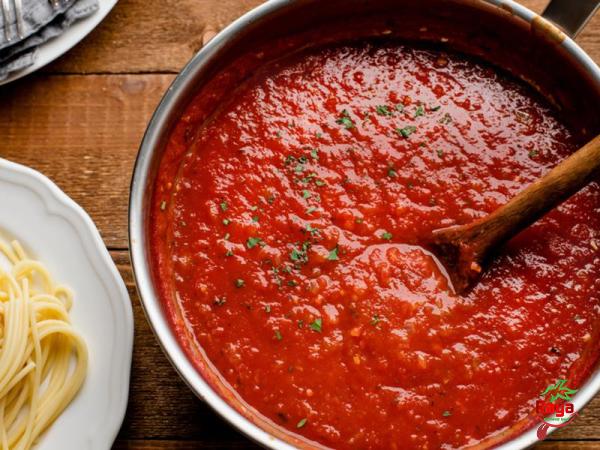 5. Supply Chain Management: Efficient supply chain management plays a critical role in ensuring consistent quality and timely delivery of tomato paste pasta sauce. Consider the following: 5.1 Sourcing Ingredients: Establish relationships with reputable suppliers of tomato paste, ensuring a steady and reliable source of high-quality ingredients. 5.2 Production Facilities: Depending on the scale of your operation, ascertain whether it is more feasible to establish in-house production facilities or to contract with third-party manufacturers. 5.3 Distribution Channels: Determine the most efficient distribution channels for your business, which may include direct sales to consumers through e-commerce platforms or partnerships with distributors for wider market reach. 6. Expanding Product Line: Once your tomato paste pasta sauce gains traction in the market, consider expanding your product line to capture a larger customer base. Some options for expansion include: 6.1 Pasta Kits: Package your pasta sauce with pre-portioned pasta and include instructions for a complete meal solution. This appeals to busy consumers seeking convenience without compromising on taste. 6.2 Dips and Spreads: Tomato paste pasta sauce can also be transformed into flavorful dips and spreads for bread, chips, and vegetables, expanding your product offerings beyond just pasta. 6.3 Private Labeling: Collaborate with other food brands or grocery stores to offer private-label tomato paste pasta sauce, increasing your market presence and revenue streams. 7. Quality Assurance and Certifications: To build trust and credibility with consumers, consider obtaining relevant certifications and quality assurance measures. This ensures consistency and adherence to food safety standards. Options to consider include organic certifications, Good Manufacturing Practices (GMP), and Hazard Analysis and Critical Control Points (HACCP) certifications. 8. Collaborations and Partnerships: Collaborating with complementary businesses and forging strategic partnerships can enhance both brand exposure and product offerings. Potential collaborations include working with pasta manufacturers, grocery stores, or even meal kit companies to create cross-promotional opportunities. 9. Market Research and Feedback: Continuously monitor market trends, consumer preferences, and competitor activities to stay ahead of the curve. Gather feedback from customers through surveys, reviews, and social media interactions to improve your products and identify areas for growth and innovation. 10. Sustainability Initiatives: Incorporating sustainability into your business practices can not only attract environmentally conscious consumers but also contribute to cost savings and long-term viability. Implement eco-friendly packaging, minimize food waste, and explore partnerships with local farmers for sourcing tomatoes. Conclusion: The business potential of pasta sauce made from tomato paste is vast and varied, with options to target different customer segments, expand product offerings, and build a strong brand presence. By understanding market demand, differentiating your products, and implementing strategic marketing and supply chain practices, you can unlock numerous growth opportunities in the dynamic and ever-evolving food industry. Embrace creativity, quality, and consumer preferences to carve out a successful niche in the flavorful world of pasta sauce made from tomato paste.
5. Supply Chain Management: Efficient supply chain management plays a critical role in ensuring consistent quality and timely delivery of tomato paste pasta sauce. Consider the following: 5.1 Sourcing Ingredients: Establish relationships with reputable suppliers of tomato paste, ensuring a steady and reliable source of high-quality ingredients. 5.2 Production Facilities: Depending on the scale of your operation, ascertain whether it is more feasible to establish in-house production facilities or to contract with third-party manufacturers. 5.3 Distribution Channels: Determine the most efficient distribution channels for your business, which may include direct sales to consumers through e-commerce platforms or partnerships with distributors for wider market reach. 6. Expanding Product Line: Once your tomato paste pasta sauce gains traction in the market, consider expanding your product line to capture a larger customer base. Some options for expansion include: 6.1 Pasta Kits: Package your pasta sauce with pre-portioned pasta and include instructions for a complete meal solution. This appeals to busy consumers seeking convenience without compromising on taste. 6.2 Dips and Spreads: Tomato paste pasta sauce can also be transformed into flavorful dips and spreads for bread, chips, and vegetables, expanding your product offerings beyond just pasta. 6.3 Private Labeling: Collaborate with other food brands or grocery stores to offer private-label tomato paste pasta sauce, increasing your market presence and revenue streams. 7. Quality Assurance and Certifications: To build trust and credibility with consumers, consider obtaining relevant certifications and quality assurance measures. This ensures consistency and adherence to food safety standards. Options to consider include organic certifications, Good Manufacturing Practices (GMP), and Hazard Analysis and Critical Control Points (HACCP) certifications. 8. Collaborations and Partnerships: Collaborating with complementary businesses and forging strategic partnerships can enhance both brand exposure and product offerings. Potential collaborations include working with pasta manufacturers, grocery stores, or even meal kit companies to create cross-promotional opportunities. 9. Market Research and Feedback: Continuously monitor market trends, consumer preferences, and competitor activities to stay ahead of the curve. Gather feedback from customers through surveys, reviews, and social media interactions to improve your products and identify areas for growth and innovation. 10. Sustainability Initiatives: Incorporating sustainability into your business practices can not only attract environmentally conscious consumers but also contribute to cost savings and long-term viability. Implement eco-friendly packaging, minimize food waste, and explore partnerships with local farmers for sourcing tomatoes. Conclusion: The business potential of pasta sauce made from tomato paste is vast and varied, with options to target different customer segments, expand product offerings, and build a strong brand presence. By understanding market demand, differentiating your products, and implementing strategic marketing and supply chain practices, you can unlock numerous growth opportunities in the dynamic and ever-evolving food industry. Embrace creativity, quality, and consumer preferences to carve out a successful niche in the flavorful world of pasta sauce made from tomato paste.

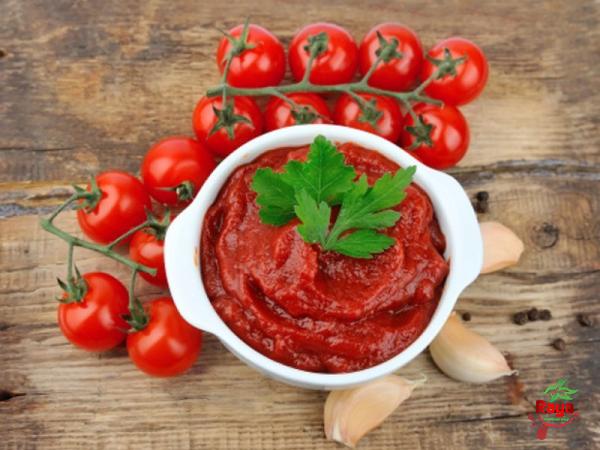

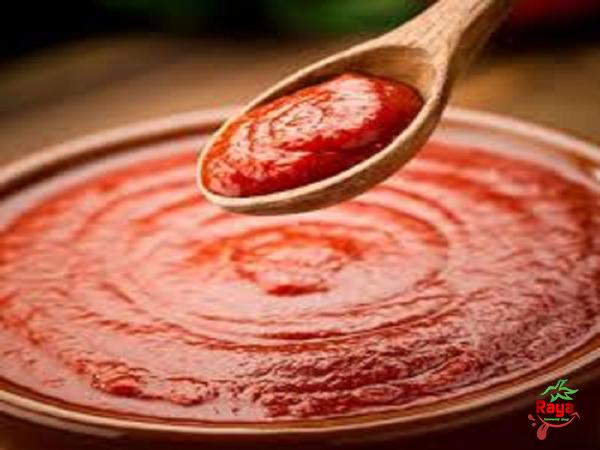


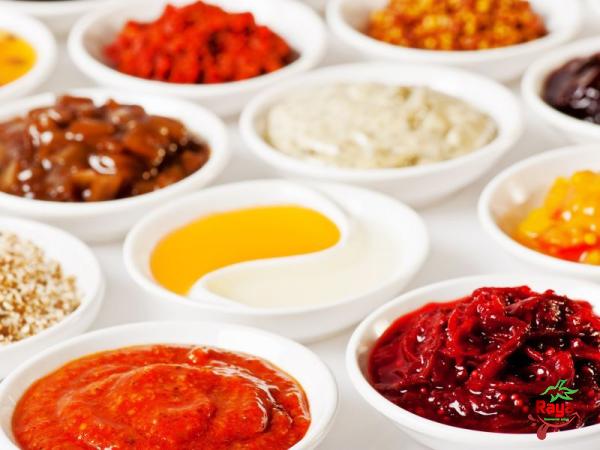

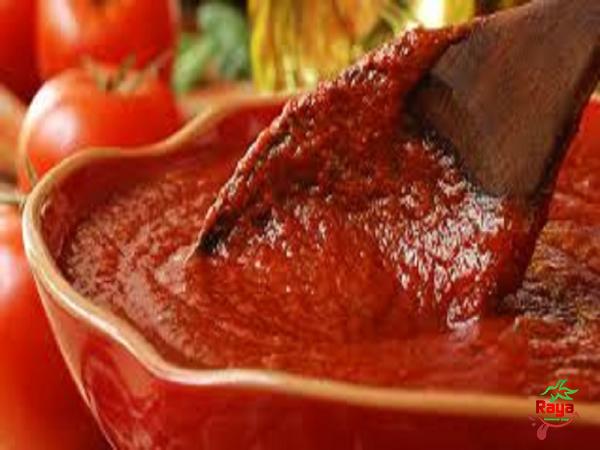
Your comment submitted.